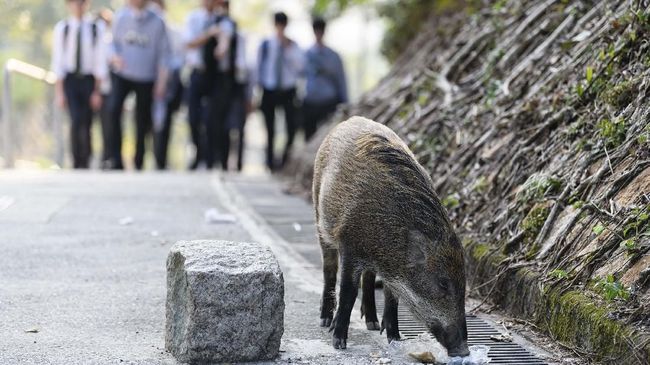Jakarta, CNN Indonesia —
Pig wild found near nuclear disaster site Fukushima, Japan. Experts suspect the pig is the result of a cross between a wild boar and a domesticated pig called a “radioactive” pig.
Experts in Japan estimate that wild boars were found in a radioactive area near the Fukushima region, breed very well and nuclear radiation has no adverse effect on their genetics.
“While radiation doesn’t cause any genetic effects, invasive domestic pig species have. I don’t think pigs can survive in the wild, but wild boars thrive in abandoned cities, because they’re so hardy,” said Donovan Anderson, a researcher at Fukushima University, citing Xinhuanet, Tuesday (6/7).
Scientists studied DNA samples from 243 pigs and found that 16 percent of the abandoned wild boars were hybrid or hybrid pigs.
Quotes Royal Society Publishing, Japan’s Fukushima nuclear disaster occurred in 2011. Researchers predict people who have begun to return to radioactive areas over the last few years now have new potential hazards to watch out for.
The Royal Society Publishing says radioactive material was dispersed as a result of the Chernobyl and Fukushima Dai-ichi Nuclear Power Plant (CNPP and FDNPP) accidents in 1986 and 2011, respectively.
This results in widespread radiological contamination of the environment and chronic exposure to ionizing radiation. As a result, the national government mandated the evacuation of people from a large area around the nuclear accident site (ie 4300 km2 for CNPP and 1150 km2 for FDNPP).
Due to the high dose level of radioactive material that spread in March 2011, the Japanese Government issued an evacuation order for 164,845 people living within a 20 km radius of the FDNPP.
The evacuation order was later modified to include an area 40 km northwest of FDNPP also contaminated by radioactive fumes, covering a total area of about 1150 km2.
As of 2016, some of the evacuated areas have been repaired and a fraction of the population has returned, but human access remains severely restricted in the most contaminated areas due to radiation exposure that exceeds the human safety threshold set by the Japanese government.
In this sense reduced human activities and changing anthropogenic pressures create favorable habitat conditions for medium to large mammal species, such as wild boars, as evidenced by increased densities in the evacuated areas.
Meanwhile in the Chernobyl refugee camp, the wild boar (Sus scrofa) experienced a drastic increase in population. However, it decreases as the population of predators and disease increases.
According to the researchers also if a future hybridization event occurs, it will occur at a low frequency. Such a result would provide evidence of the species’ lack of survivability.
(ryh / mik)
– .

